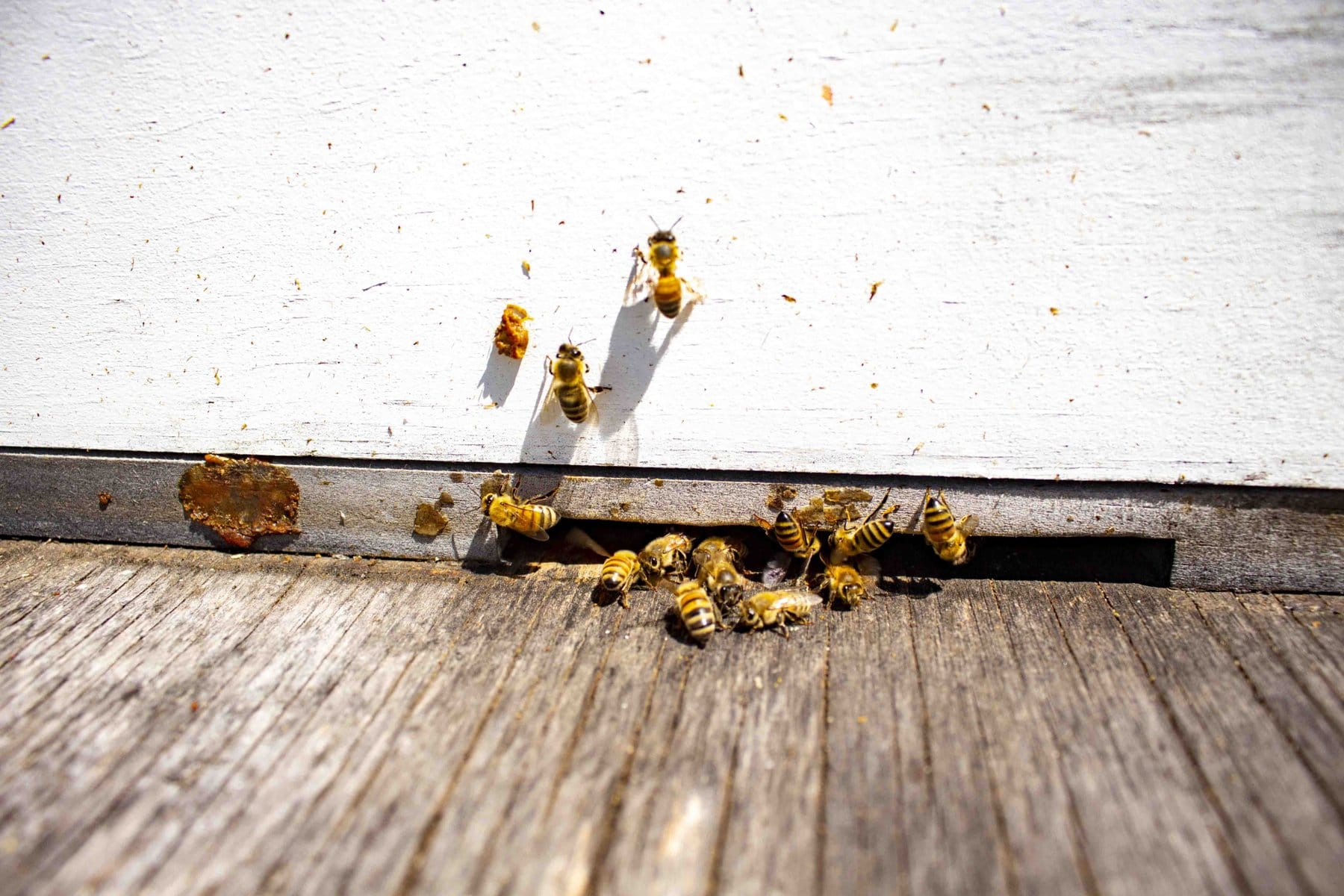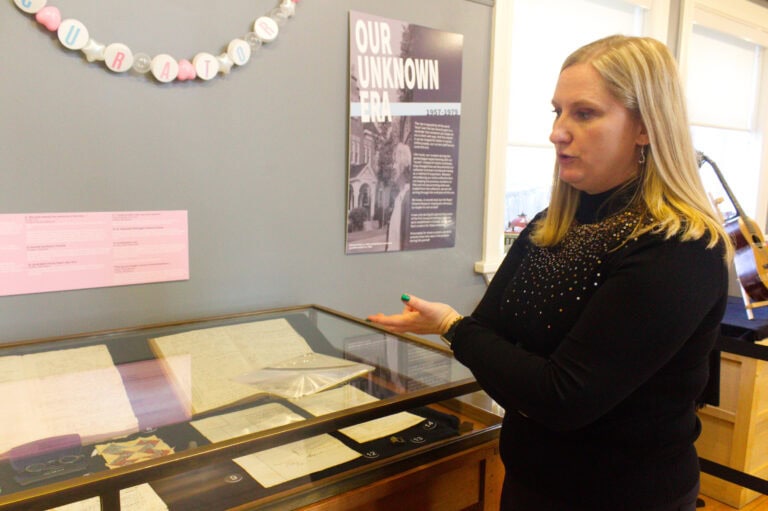Somer Slobodian and Maddy Gordon
After all his honeybees mysteriously died, farmer Dave White has had to completely reinvent his bee business.
“We started our hives with honey in the fall so they have food all winter. (Then in) the spring they were all dead,” said the proprietor of White Orchard Farms in Niagara-on-the-Lake.
He lost all of his hives, rather than the usual one or two casualties that normally occur over the winter.
A few years ago, he had 14 hives. Then there were 10. By last fall, he had eight. Now there’s none.
And oddly, there was no evidence indicating what caused the bees’ demise.
“They just died. It’s the first time we’ve ever seen this. We’ve been doing it for about six years now,” he said.
It’s a widespread problem – and costly, about $4,000 in White’s case. But he’s not alone. The problem is much bigger than one small operator in Niagara-on-the-Lake.
According to the Canadian Association of Professional Apiculturists’ colony loss reports, 45 per cent of winter colonies across Canada didn’t survive. In Ontario, that rose to 47 per cent.
White had to think of new ways to run his business. Recently, he brought in six nucleus colonies, called bee nucs. Each one contains about 20,000 bees and the goal of the nucs is to serve as a jumpstart for a hive.
The nucs contain a queen, workers and eggs. They come in a four-frame box, which farmers then put into their hives. White said the queen, along with the eggs and her workers, will regenerate the hive.
“It’s like starting all over again,” said White. “It’s kind of a boost instead of starting from scratch.”
If this works and the bees don’t die off, then he’s going to bring in another 20 or 30 nucs next year.
“We’re going to start ramping it up again,” he said.
The decline in honeybees is an issue beekeepers have been warning the government about for years. Now, in 2022, millions of bees are dead, leaving beekeepers stumped.
“As far as what’s happening here in Niagara, this is the worst we have ever seen in bee mortality,” said George Scott, the managing director of Niagara Beeway, an organization that protects native flora and fauna.
No one knows exactly why the bees are dying. However, there are many factors that could contribute to their quick decline, including the use of pesticides.
“When we look at how those bees died, there is no doubt in our mind that this is due to chemical exposure,” said Scott.
In Scott’s family, beekeeping is a multigenerational business. It’s in his blood.
Now his main consideration is, “how do we totally revolutionize and innovate our business, so we stay in business?”
“Or do we just stop and let the food prices go up? Let the pollination services fall apart?” he added.
Giving up beekeeping would be devastating, he said.
Niagara Beeway offers a free swarm rescue for Niagara residents. It used to have five teams across Niagara, but is now down to three, another victim of the bee die-off.
“For the first time in 22 years, I’m gonna have to lay people off because we don’t have enough revenue. First time ever. Does anybody care?” said Scott.
The varroa mite, a parasite that feeds on the honeybee, has wiped out a large number of bees, too.
George Dubanow, president of the Niagara Beekeepers Association, said because of climate change, beekeepers need to start treating for the varroa mite in early August rather than September.
Beekeepers are frustrated with how the federal government is handling the situation. Or, rather, how the government hasn’t handled the situation.
“The government is not very willing to co-operate, to find out (the cause) or do some lab tests and stuff like that,” said Ed Unger, of B-Y’s Honey Farm on Concession 6 in Niagara-on-the-Lake.
B-Y can only supply about half of the people who call looking for honey, he said.
Unger also does beekeeping classes, but the bee shortage means there’s not enough bees for the students to work with.
Scott said Niagara Beeway wants help from Global Affairs Canada, but when the department talks to beekeepers across the country, provinces can’t seem to agree on a strategy.
Importation of “fake” honey is big concern and Scott said Niagara beekeepers want Global Affairs to take over enforcement from the Canadian Food Inspection Agency.
The Canadian Food Inspection Agency said it takes honey adulteration and food fraud seriously.
The agency said it is working to reduce the risk of food fraud by verifying that industry complies with Canada’s regulatory requirements, a CFIA spokesperson told The Lake Report via email.
Fake honey is made with diluted real honey with syrups like high-fructose corn syrup or beet syrup, according to the media site Insider.com. Or, alternatively, fake honey can be created when manufacturers chemically modify the sugars in syrups to make them look like real honey.
Fake honey prices undercut those charged for genuine honey, which affects beekeepers and their business.
“When food is misrepresented it can damage the industry’s reputation and hurt food businesses that comply with the requirements because they must compete with adulterated products that can be produced more cheaply,” said the spokesperson for the CFIA.
Meanwhile, Scott worries about the amount of fake honey being sold in stores and how it’s affecting the industry.
And beekeepers can’t pinpoint exactly why they’re losing entire colonies of bees, uncertainty that has left many of them worried, he said.
“At this particular point, the only thing that’s disappearing faster than the honeybees are beekeepers.”











